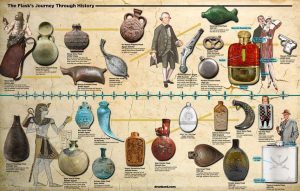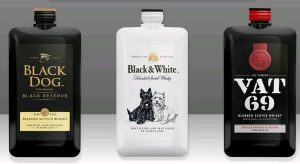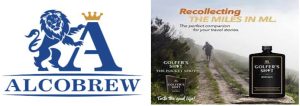- AI
- Arbitration
- Asia
- Automobile
- Bangladesh
- Banking
- Biodiversity
- Biological Inventions
- bLAWgathon
- Brand Valuation
- Business
- Celebrity Rights
- Company Act
- Company Law
- Competition Law
- Constitutional Law
- Consumer Law
- Consumer Protection Authority
- Copyright
- Copyright Infringement
- Copyright Litigation
- Corporate Law
- Counterfeiting
- Covid
- Design
- Digital Media
- Digital Right Management
- Dispute
- Educational Conferences/ Seminar
- Environment Law Practice
- ESIC Act
- EX-Parte
- Farmer Right
- Fashion Law
- FDI
- FERs
- Foreign Law
- Gaming Industry
- GDPR
- Geographical Indication (GI)
- GIg Economy
- Hi Tech Patent Commercialisation
- Hi Tech Patent Litigation
- IBC
- India
- Indonesia
- Intellectual Property
- Intellectual Property Protection
- IP Commercialization
- IP Licensing
- IP Litigation
- IP Practice in India
- IPAB
- IPAB Decisions
- IVF technique
- Judiciary
- Khadi Industries
- labour Law
- Legal Case
- Legal Issues
- Lex Causae
- Licensing
- Live-in relationships
- Lok Sabha Bill
- Marriage Act
- Maternity Benefit Act
- Media & Entertainment Law
- Mediation Act
- Member of Parliament
- Mergers & Acquisition
- Myanmar
- NCLT
- NEPAL
- News & Updates
- Non-Disclosure Agreement
- Online Gaming
- Patent Act
- Patent Commercialisation
- Patent Fess
- Patent Filing
- patent infringement
- Patent Licensing
- Patent Litigation
- Patent Marketing
- Patent Opposition
- Patent Rule Amendment
- Patents
- pharma
- Pharma- biotech- Patent Commercialisation
- Pharma/Biotech Patent Litigations
- Pollution
- Posh Act
- Protection of SMEs
- RERA
- Section 3(D)
- Signapore
- Social Media
- Sports Law
- Stamp Duty
- Stock Exchange
- Surrogacy in India
- TAX
- Technology
- Telecom Law
- Telecommunications
- Thailand
- Trademark
- Trademark Infringement
- Trademark Litigation
- Traditional Knowledge
- UAE
- Uncategorized
- USPTO
- Vietnam
- WIPO
Introduction
In Diageo Brands B.V. & Anr. vs Alcobrew Distilleries India Pvt the plaintiff Diageo Brands B.V. approached the Delhi HC seeking injunction against Alcobrew Distilleries India Pvt for manufacture and sale of “Golfer’s shot” contenting the design of the bottle/flask to be an infringement of its “Scotch Hipster” range (Registered Design bearing No. 306577). and subsequently alleging design piracy by the defendant as per section 22(1)1 of the Designs Act, 2000. The court dismissed the interlocutory application seeking temporary injunction post analysis on the matter on prima facie basis establishing that the test to determine infringement in trademark cases visa-vi design cases are different and the application of the appropriate test i.e., the instructed eye test shows no such infringement on part of the defendant. The article analyses the judgement by Justice C. Hari Shankar, discussing the distinction created by the court between the application of Design Act 2000 visa-vi Trademarks Act 1999, highlighting its digression from the judgement of Great Galleon.
The Origin Of Hip Flasks
Throughout the ages the practice of storing, concealing, and carrying alcohol in various objects/articles such as gutted fruit or a pig’s bladder has been prevalent practice. During the 1920’s the hip flask became a popular way to store and carry alcohol in concealment in the United States at the time of national prohibition. The sleek shape and small size of the flask enabled individuals to carry alcohol in public discreetly wherein such individuals were colloquially referred to as “hipsters”.[1] Thereafter the hip flasks gained immense popularity continued to be used even after the great prohibition ended and exists till date.
[Image Source: scotlandshop Dot com][2]
Diageo And Its Scotch Hipster 180ml Range
Diageo Brands BV is a Netherlands based alcoholic beverage company which dates back to 1997. The multinational company possesses a wide range of beer and spirits, especially scotch whiskey.[3] In May 2019, Diageo Indian launched its ‘Scotch Hipster’ 180ml range in India, wherein it introduced scotch whiskey in a smaller packaging in order to reduce the price as compared to that of a larger bottle with an aim to appease the millennial culture of trying something before buying a larger pack.[4] The packages for the Scotch Hipster 180ml range is inspired and modelled after the 1920’s hip flasks. Additionally, Diageo has not only registered its hipster bottles (Registered Design bearing No. 306577) under the Designs Act 2000 but also acquired the propriety rights of using “hipster” in India and “Pocket Scotch” globally in its trade market.
In December 2022 Diageo approached the Delhi HC for a suit[5] instituted against Alcobrew Distilleries India Pvt, a homegrown liquor company, seeking injunction against Alcobrew Distilleries India Pvt for manufacture and sale of “Golfer’s shot” bottles contenting the design of the bottle/flask to be an infringement of its “Scotch Hipster” range (Registered Design bearing No. 306577) and subsequently alleging design piracy by the defendant as per section 22(1)1 of the Designs Act, 2000. The defendant claimed defence under 22(3)2 read with Section 19(1)(b) and (c)3 arguing that the plaintiff’s registered design was identical to an existing international design (Design no. D562138) making it bad on the account of bad publication. Siding with the defendant’s arguments the court dismissed the interlocutory application seeking temporary injunction post analysis on the matter on prima facie basis establishing that the test to determine infringement in trademark cases visa-vi design cases are different and the application of the appropriate test i.e., the instructed eye test shows no such infringement on part of the defendant.
The judgment by Justice C. Hari Shankar digresses from a non-binding judgement of Diageo Brands B.V. & Anr. vs Great Galleon Ventures Limited on similar claims passed by Delhi HC months prior to the said judgement. In the judgment of Great Galleon, the court passed the verdict in favour of Diageo imposing a temporary injunction on manufacture, sale, import and export on the defendant’s ‘GOA Gold’ Whisky (180 ml), Rum (180 ml) or any other product that is identical/similar to Plaintiffs’ Registered Design No. 306577 while the trade drees imitation claims remained to be determined. Months apart, the two judgements on similar fact scenarios and claims highlights the difference in interpretation of the law by the judges of the same court.
JUSTICE C. HARI SHANKAR’S INTERPRETATIONS OF THE LAW
In the matter of Diageo Brands B.V. & Anr. vs Alcobrew Distilleries India Pvt the court primarily deals with then following issues:
- Whether the plaintiff’s registered design is novel and original, vis-à-vis prior art?
- Whether the defendant’s design infringes upon the plaintiff’s registered design?
- The appropriate test to determine infringement, average customer test or the instructed eye test?
The prerequisite to obtaining the registration of a design under the Design Act 2000 is proving its novelty and originality as opposed to prior art. Even though the plaintiff’s design is registered, in such a case of design infringement the court emphasised the need for the plaintiff to establish novelty and originality of its registered design visa-vi prior art. In copyright infringement cases in India the courts often make the mistake of presumption of copyright ownership of the plaintiff alleging infringement, such presumption often proves to be harmful and detrimental to the outcome of the suit for the defending party. Here, the court acknowledges the issue of novelty and originality of the plaintiff’s registered design as contended by the defendant which becomes a deciding to the outcome of the suit.
In determining this issue, the court digresses from the opinion of Diageo Brands B.V. & Anr. vs Great Galleon Ventures Limited[6] wherein the non-binding judgement by a single judge bench of the Delhi HC established that the plaintiffs were indeed the proprietor of their registered design as the defendants were unable to submit documented proof of the against same. The court reinstated the fact that the plaintiff outsourced the said design does not relinquish it of its proprietary rights on the said design. However, in this case, rather than relying on the judgement of Great Galleon, the court arrives at a conclusion relying on the submissions made by the defendant wherein it was contended that the plaintiff cannot allege piracy over a design that is based on a prior art, i.e., the hip flask which is has also become common design trait in the liquor trade over time. “Rectangular bottles with round shoulders, basic rimmed caps and basic monochromatic designs, it is asserted, are broad features, common to the liquor trade.” The defendant claimed defence under 22(3)2 read with Section 19(1)(b) and (c)3 arguing that the plaintiff’s registered design was identical to an existing international design (Design no. D562138) making it bad on the account of bad publication itself which makes the plaintiff ineligible to file such a suit of infringement.
Upon analysis of the arguments presented by both sides the court was of the opinion that the mere features that makes the plaintiff’s design novel and original from that of the prior art may also serve the purpose of distinguishing the plaintiff’s design from the defendants. Justice C. Hari Shankar opined, “if the suit design is novel and original vis-à-vis prior art with respect to certain aspects, and the defendant’s design is similar to prior art in respect of those aspects, it necessarily follows, as a logical corollary, that the impugned defendant’s design is novel and original, vis- à-vis the suit design qua the said aspects.”[7]
[Image Sources : afaqs dot com][8]
It is important to note that the court makes an express and clear distinction between the Trademarks Act 1999 and the Design Act 2000. Interpreting the language of the statutes in line with the legislative intent the court clarified that an infringement under S.29 of the Trademarks Act is not the same as piracy as per S.22 of the Design Act. While the Intention to infringe is irrelevant to determine infringement of a trademark, under Section 29 of the Trademarks Act, piracy in the other hand involves an element of conscious theft making it a rather serious affair.[9] The difference between the two further highlights their purpose of existence. Trademark is essentially employed by a brand to distinguish itself from other brands in the eyes of the average consumer by reputation and goodwill through use of the mark whereas Design law aims to promote the creation of novel and original designs by providing limited market excludability through legal inducement.[10] Design registration is not a tool for source identification or to prevent consumer confusion but rather a legal protection to prevent imitation of products causing loss to producers. Hence when the plaintiff alleged the defendant had copied the distinctive elements which contributed to the Plaintiffs’ overall trade dress, the court compared the two designs to conclude the essential features of the plaintiff’s registered design are not sufficient alone to become a source identifier for the plaintiff’s products. Moreover, the court stated that except the black and gold colour scheme present in the two designs the two products differed in their labels and trade dress.[11]
[Image Source : Alocobrew Dot com]
Further, the court relied on the principles laid down in B. Chawla v. Bright Auto Industries[12], Carlsberg Breweries[13], Procter & Gamble[14] to state that in such a case of design piracy the test of the instructed eye conducted by that of an informed person who has the knowledge of prior art is applicable and criticised the judgment of Great Galleon for adopting the uninstructed ordinary purchase test while determining such an issue. A design is registered owing to its originality and novelty vis-à-vis prior art hence when the same is in question it only the instructed eye of an informed individual who is aware of prior art who can determine the presence of lack of such originality and novelty vis-à-vis prior. Hence the average consumer who does not possess the relevant knowledge to determine the said imitation cannot be used as a standard test to arrive at conclusion.[15]
Conclusion
Thus, to conclude the judgement of Diageo Brands B.V. & Anr. vs Alcobrew Distilleries India Pvt likely is to have a larger impact on the final judgement of Diageo Brands B.V. & Anr. vs Great Galleon Ventures Limited than the latter’s injunction suit had in this case even though both are single bench Delhi HC judgements.
Author: Apurbaa Dutta, a Final Year B.A.LLB Student, O.P. Jindal University, in case of any queries please contact/write back to us via email to chhavi@khuranaandkhurana.com or at Khurana & Khurana, Advocates and IP Attorney.
[1] Adam Rutherford, Hiding a Wee Dram? The History of the Hip Flask, TARTAN BLOG (Jan.21, 2021). https://www.scotlandshop.com/tartanblog/hip-flask-history.
[2] https://www.scotlandshop.com/tartanblog/hip-flask-history.
[3] https://www.diageo.com/en.
[4] Anjana Naskar, Diageo’s Hipster Twist For Millennial Consumers Impact, IMPACT. https://www.impactonnet.com/amp/cmo-interview/diageos-hipster-twist-for-millennial-consumers-7145.html.
[5] 2022/DHC/005661.
[6] Diageo Brands B.V. & Anr. vs Alcobrew Distilleries India Pvt (CS(COMM) 30/2022).
[7] Diageo Brands B.V. & Anr. vs Alcobrew Distilleries India Pvt (CS(COMM) 30/2022), para 164.
[8] https://www.afaqs.com/interviews/diageo-indias-nitesh-chhapru-wants-people-to-consider-scotch-whisky-at-casual-get-togethers.
[9] Diageo Brands B.V. & Anr. vs Alcobrew Distilleries India Pvt (CS(COMM) 30/2022), para 150.
[10] Diageo Brands B.V. & Anr. vs Alcobrew Distilleries India Pvt (CS(COMM) 30/2022), para 151.
[11] Diageo Brands B.V. & Anr. vs Alcobrew Distilleries India Pvt (CS(COMM) 30/2022), para 96.
[12] AIR 1981 Del 95.
[13] Carlsberg Breweries v Som Distilleries and BreweriesLtdC.S.(COMM) 690/2018 & I.A. No.11166/2018.
[14] Procter & Gamble Company v Reckitt Benckiser (UK) Ltd [2007] EWCA Civ 936
[15] Diageo Brands B.V. & Anr. vs Alcobrew Distilleries India Pvt (CS(COMM) 30/2022), para 160.






